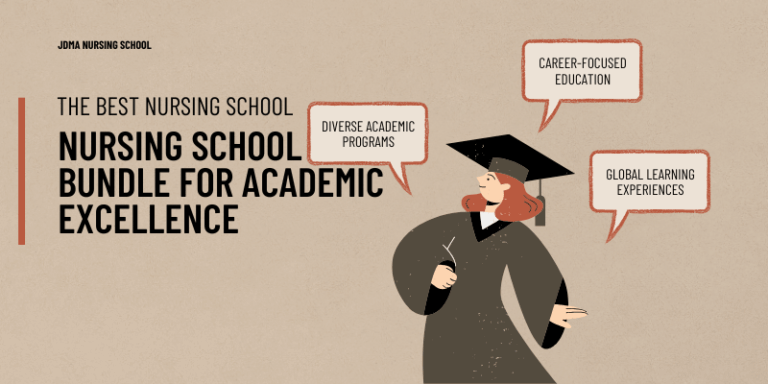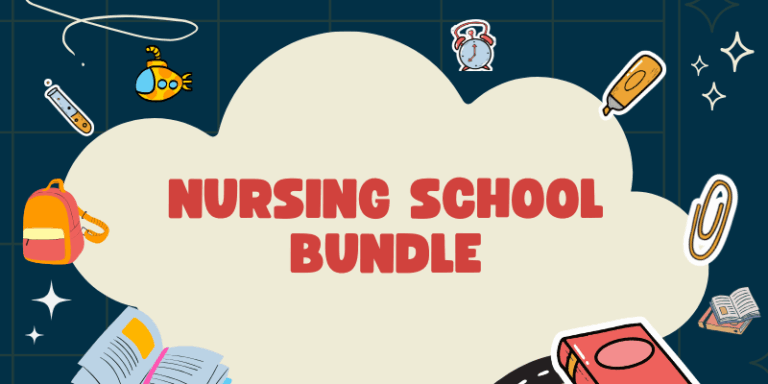
Best Nursing School Bundle for Academic Excellence
Find out which best nursing school bundle ranks best for knowledge retention and test prep. Choose the right bundle for success.
Mastering anatomy and physiology is a cornerstone for every nursing student. These subjects provide the foundation nurses need to make critical patient care decisions. Whether it is understanding how the heart pumps blood or how the body fights infections a solid grasp of these systems will prepare future nurses to handle real life challenges. By organizing your study routine and focusing on the essentials you will build a strong knowledge base that supports your career.
A strong foundation in Anatomy & Physiology is crucial for anyone pursuing a career in nursing. These two disciplines go hand in hand anatomy focuses on the structure of the human body while physiology explains how those structures function. Mastering these basics allows nurses to assess patients accurately recognize early signs of illness and provide effective care.
According to Dr. Emily Rogers, RN, PhD,
“Nurses with a deep understanding of Anatomy & Physiology can anticipate complications and make better clinical decisions, ultimately improving patient outcomes.”
Using a Nursing Study Guide for Anatomy & Physiology helps break down complex topics into easy to understand concepts. These guides often include diagrams, real life examples and practice questions making it easier for students to retain critical information.
Beyond academics this knowledge is essential in real-world nursing practice. Whether administering medication, monitoring vital signs or assisting in medical procedures nurses rely on their Anatomy & Physiology expertise every day.
A well structured Nursing Study Guide can serve as a valuable resource throughout a nurses education and career, ensuring they remain confident and competent in delivering top quality patient care.
Anatomy focuses on the structures within the body think of it as the bodies blueprint. From skeletal bones to intricate muscular systems anatomy allows nurses to identify where things are and how they are arranged. This knowledge is critical for tasks like placing IVs or understanding a patients physical injuries. For more detailed study materials take a look at this comprehensive anatomy guide.
On the other hand physiology explains how those anatomical structures work together. For example, how does the heart pump blood? What triggers the nervous system to respond to pain? Physiology provides answers offering insight into the processes that maintain life.
Imagine the lungs as a pair of sponges that is anatomy. However their ability to transfer oxygen into the bloodstream describes physiology. The two fields are intertwined forming the foundation for understanding diseases, treatments and preventive care. Nurses with a holistic understanding of both ensure more effective and empathetic patient care.
To truly understand anatomy and physiology narrowing your focus to key systems is essential. Below are the primary body systems and their significance in nursing:
The cardiovascular system acts as the bodies delivery network transporting oxygen, nutrients and hormones. Nurses frequently monitor vital signs like heart rate and blood pressure ensuring this system functions smoothly. A deeper dive into cardiovascular basics can bolster your skills when reading ECGs or assessing circulation.
Think of the nervous system as the bodies control center. Through electrical signals it communicates vital instructions to organs, muscles and glands. Understanding the brains neural pathways makes it easier to address neurological conditions such as strokes or seizures.
We breathe about 20,000 times a day but what is happening under the surface? The respiratory system allows oxygen to enter the bloodstream while expelling carbon dioxide. Nurses familiar with conditions like asthma or pneumonia can help their patients breathe easier.
The digestive system breaks down food into energy. From the stomach to the intestines each component plays a role in nourishing the body. Nurses trained in this area are adept at assessing issues like malnutrition or gastrointestinal disorders.
Success in anatomy and physiology lies in knowing how to study the material effectively. Here are techniques to simplify these complex subjects:
Visuals help translate dense information into digestible chunks. Diagrams of the heart, muscles or brain make it easier to connect structure with function. Many excellent anatomy guides and diagrams are available to aid your studies.
Divide chapters into smaller more approachable sections. Study the skeletal system one week and tackle the circulatory system the next. This approach prevents information overload and reinforces learning.
Memory techniques like active recall and spaced repetition promote long term retention. Instead of rereading notes attempt to answer key questions yourself. Apps like Anki can help by structuring study sessions based on what you have already mastered.
Vital signs such as temperature, pulse, respiration and blood pressure reveal how well the body maintains balance or homeostasis. Nurses who understand the physiology behind these signs are better equipped to identify irregularities and respond appropriately.
When patients describe pain or discomfort anatomical knowledge helps nurses pinpoint potential issues. For example chest pain might indicate cardiovascular problems while abdominal pain often relates to the digestive system. Learn more about nursing assessments and diagnosis methods.
Safe medication administration is one of the most critical responsibilities in nursing. A strong grasp of Anatomy & Physiology helps nurses understand how drugs are absorbed, distributed, metabolized and excreted by the body. This knowledge allows them to adjust dosages, recognize side effects and prevent harmful drug interactions.
According to Dr. Susan Clark, PharmD,
“Nurses who understand physiology can anticipate how medications will affect different patients, ensuring safer and more effective treatment.”
A Nursing Study Guide on medication administration helps simplify complex pharmacology concepts offering clear explanations on how different drugs interact with the bodies systems. Nurses use this knowledge to:
Without a proper understanding of Anatomy & Physiology medication errors can occur leading to severe consequences. A well structured Nursing Study Guide serves as an essential resource reinforcing key principles of safe drug administration and helping nurses build confidence in their practice.
By mastering the connection between physiology and medication effects nurses ensure patient safety and provide high quality informed care.
In conclusion Anatomy & Physiology form the foundation of every nursing students education. These subjects are more than just academic requirements they are essential for understanding how the human body works, diagnosing conditions and delivering effective patient care. By mastering them you will not only perform better in exams but also develop the skills needed to become a confident and capable nurse.
According to Dr. Emily Harris, RN, PhD,
“A nurse’s ability to assess, diagnose, and treat patients starts with a deep understanding of Anatomy & Physiology. It’s the knowledge that bridges the gap between theory and real world care.”
A Nursing Study Guide can make learning these complex subjects easier by breaking down difficult concepts into simple structured lessons. Using diagrams case studies and practice questions these guides help students retain information and apply it in clinical settings.
Nursing is a challenging yet rewarding profession, and success begins with a strong educational foundation. Embrace the challenge, stay committed and use effective study techniques because every chapter you master brings you one step closer to making a real difference in patient lives. With the right resources and dedication you will build the expertise needed to thrive in your nursing career.

Find out which best nursing school bundle ranks best for knowledge retention and test prep. Choose the right bundle for success.

Complete nursing school workbook bundle! Includes flashcards for nursing students, cheat sheets, dosage calculation practice, and more.

Get the instant-download Printable Nursing School Bundle—packed with study guides, cheat sheets, NCLEX prep, and digital planners.
By subscribing to our newsletter you agree to our Terms and Conditions and Privacy Policy